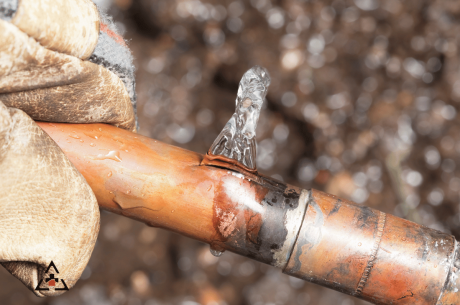Mold often grows out of sight in wall cavities due to water problems like flooding or leaks. Before you know it, it creates a toxic environment in your home, compromising the indoor air. The good news is that even hidden mold leaves behind clues, whether it’s in closets or walls. You can find out if mold is growing in your walls in several ways. Here is how to detect mold in walls.
How to Detect Mold in Walls
Follow the Moisture
Mold thrives where moisture lingers. If your home has experienced major water damage, mold can begin growing inside walls within 24 to 48 hours. When water reaches drywall, the best approach is to cut the drywall at least one foot above the highest water mark to stop mold from spreading unseen behind the surface.
Other water problems, like leaking pipes, may also trap moisture inside your walls. Even when leaks are visible, moisture can get inside walls, providing mold a place to grow. Be aware of signs that drywalls are moist like:
- Water stains
- Dark rings
- Discoloration
- Deterioration like peeling, bubbling, or cracking of the paint or wallpaper
Moreover, if the walls are bowed, bulging, or warped, they most likely contain moisture. Another clue is if the surface of the walls feels wet or damp.
Mold Colors
First of all, if the wall is rotting, it likely has mold underneath it. In less severe cases, mold might not be that noticeable. Inspect the walls and check for mold on walls behind furniture and along baseboards.
Mold can have different colors and textures, so be sure to recognize them. Mold can be black, green, gray, white, or brown. Mold can even appear orange, pink, or purple when it grows behind vinyl wallpaper.
Note: Just because the mold color is black, it does not mean that it is the “black mold” that everyone is afraid of. The exact nature of black mold and its health effects still require further study.
All types of mold can pose potential health risks, even if they do not produce mycotoxins, especially for young children. Also, people with allergies, asthma, chronic lung conditions, or weakened immune systems may be at a greater risk of experiencing severe symptoms. Effects vary from person to person.
That is why, if you believe you have black mold in your house, black mold remediation is vital.
Another sign of visible mold is the discoloration of walls, even if it has been painted over. If the water damage inside the walls persists, mold will show signs on the surface.
Musty Smell
If you don’t see signs of mold but you can smell it, it may be hidden in your walls. A musty smell indicates that mold is growing in your home. The smell of mold feels earthy, like rotting leaves or decaying wood in a dense, damp forest.
If you think there’s mold in your walls, get on your hands and knees and smell the electrical outlets. This might sound silly, but it may help you sense mold if it’s growing within walls. Outlets have better access to the area behind the walls. Thus, smelling them can help identify the mold problem.
Call PuroClean for Professional Mold Removal
Now that you know how to detect mold in walls, you might be wondering how much mold is in your walls. This is where a professional mold removal company like PuroClean comes in. We use professional inspection techniques and tools to determine the existence and extent of mold. For mold removal and water damage repair services, contact PuroClean Restoration Services, serving Cranford, NJ and nearby areas.




 PuroClean Restoration Services
PuroClean Restoration Services